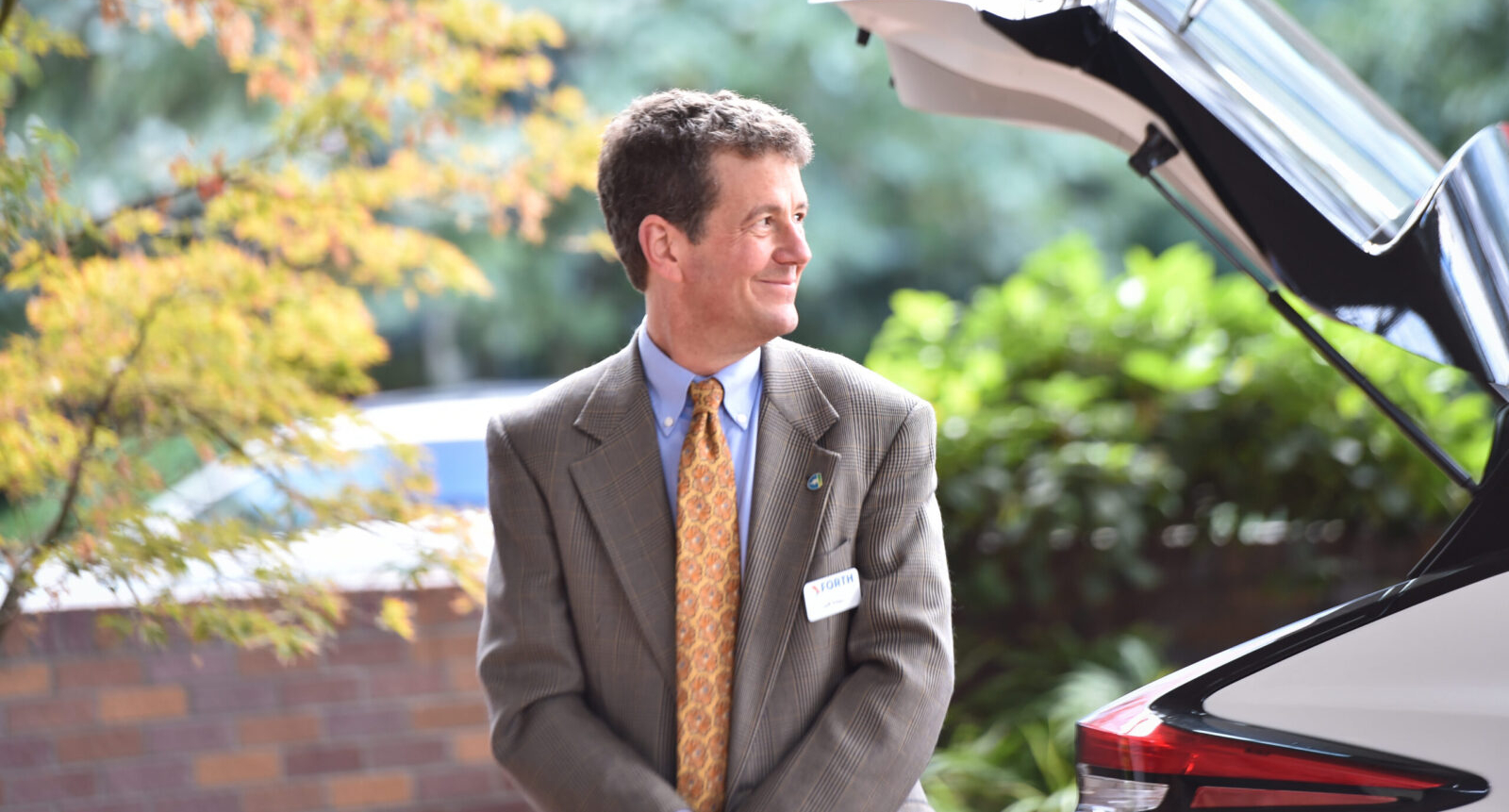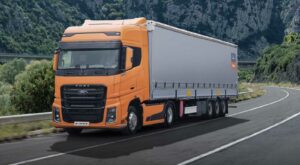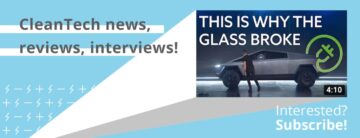Підпишіться на щоденні оновлення новин від CleanTechnica на електронну пошту. Або слідкуйте за нами в Новинах Google!
The federal Bipartisan Infrastructure Law and Inflation Reduction Act are making once-in-a generation investments in reducing greenhouse gas (GHG) pollution. However, it can be challenging for state and local governments — and advocates — to keep track of all the funding programs created by these laws, and direct funding to its highest and best uses.
One current example is the federal Climate Pollution Reduction Grant program, which will allocate roughly $5 billion to states, tribes, and local governments for a broad range of programs. The US EPA provided planning grants to states, tribes, and major urban areas. These governments must submit Priority Climate Action Plans by March 1. They may then submit proposals by April 1 for competitive five-year grants ranging between $2 million and $500 million each to implement *any of the actions included* in these plans. Most of the grants will be less than $50 million. Applicants are encouraged to team up to submit larger coordinated projects.
Time is short, and these “Priority Plans” are rightly focused on measures that can be implemented quickly and fully within five years, that will produce large and immediate climate benefits, and that provide additional benefits to low-income and disadvantaged communities such as cleaner air, reduced travel costs, and enhanced job opportunities. They should not be used for projects that can be funded by other sources.
Here are recommendations for priority transportation electrification measures that governments should consider including in plans and funding through implementation grants:
Vehicle Incentives
Electric car incentives. Electric cars can dramatically and rapidly reduce greenhouse gas pollution, air pollution and transportation costs. While electric car sales continue to surge over 50% annually, higher upfront purchase costs and interest rates continue to dampen sales, especially for lower-income buyers. A recent огляд found that EV rebates of 10–15% could increase sales by 18-25%. This measure is especially important for states that have opted into California’s stronger Advanced Clean Cars standards. If funds are limited, governments may want to consider programs that specifically target specific user groups such as drivers for taxi and gig services, government fleets, or community-based organizations.
Medium and heavy-duty vehicle incentives. Electrifying heavy-duty trucks and buses can eliminate toxic diesel pollution and substantially reduce greenhouse gas pollution. Cash-on-the-hood incentives can help drive sales as well. These incentives are especially compelling in states that have adopted the Advanced Clean Trucks and Advanced Clean Fleets rules that are pushing faster purchases of such vehicles. Incentives will help ensure appropriate vehicles are available and affordable and these regulatory targets are met.
Electric bike incentives. Electric bikes can replace cars for many trips and at a far lower cost and carbon footprint. Governments should consider funding existing bikeshare programs to go electric or expand; bringing electric bikeshare to smaller cities; and financial incentives for individuals to purchase e-bikes. Portland State University maintains a database of existing programs and additional information to help jurisdictions design such programs.
School bus incentives. Electric school buses reduce children’s exposure to toxic diesel and lower long-term operating costs for school districts. Over $5 billion is already dedicated to clean electric school buses, so CPRG funds are best used to complement these funds by helping schools plan for the transition, apply for federal funds, and work with their local utilities to maximize the grid and resiliency benefits of these buses.
Charging Programs
Community Charging Programs. There is $7.5 billion for charging available through the National Electric Vehicle Infrastructure (NEVI) Formula Program and Charging and Fueling Infrastructure (CFI) grants. However, these funds are largely focused on fast charging along highways, on hard infrastructure costs, and on public facilities. To directly serve communities, and not just drivers passing through them, governments should place Level-2 charging in historically underserved areas at key locations such as multifamily housing, workplaces and rural tourist destinations, and invest in community outreach and engagement to increase equitable access and use. CPRG funds could allow flexibility for governments and communities to identify ideal locations, provide hands-on support for installation, and fund community activation activities such as ride and drive events.
Freight corridors. The NEVI and CFI programs are largely, though not entirely, focused on passenger vehicles. Building out fast charging for heavy duty trucks along major freight corridors will be a large and expensive undertaking, and state governments may wish to band together to use CPRG funds to kick-start this effort on key corridors.
Інші програми
Роз'яснювальна робота. Consumer Reports has found that only 7% of Americans have driven an all-electric EV in the past year, and only 17% have ridden in one. Historically underserved communities are even less likely to see EVs or have them marketed to them. Governments should consider investing CPRG funds in programs that expose more residents to EVs, such as ride and drive events and focused community engagement.
EV Carshare. One good way to expose drivers to electric cars, and provide mobility benefits, is to support carsharing programs that allow vehicle rental by the hour. Programs like Evie Carshare in the Minneapolis area or smaller scale programs run by Forth bring the benefits of electric vehicles with lower costs and fewer entry barriers.
Implementing Programs
Thanks to generous support from philanthropic funders, Forth can help communities develop CPRG implementation grants. We may also be able to help communities implement these programs as a subrecipient.
For more information about how to build effective and equitable transportation electrification programs, and secure federal funding to support them, visit Forth’s Federal Grant Support page and come to one of Forth’s upcoming in-person workshops:
Other sources of assistance:
By Jeff Allen, Executive, Director, Четвертий.

Маєте підказку щодо CleanTechnica? Хочете розмістити рекламу? Хочете запропонувати гостя для нашого подкасту CleanTech Talk? Зв'язатися з нами тут.
Наше останнє відео EVObsession
[Вбудоване вміст]
Мені не подобаються платні екрани. Вам не подобаються платні екрани. Кому подобаються платні екрани? Тут, у CleanTechnica, ми деякий час впроваджували обмежену платну систему, але це завжди здавалося неправильним — і завжди було важко вирішити, що ми маємо туди включити. Теоретично ваш найексклюзивніший і найкращий вміст залишається за платним доступом. Але тоді менше людей це читає!! Отже, ми вирішили повністю відмовитися від платного доступу тут, у CleanTechnica. але...
Дякую!
реклама
CleanTechnica використовує партнерські посилання. Перегляньте нашу політику тут.
- Розповсюдження контенту та PR на основі SEO. Отримайте посилення сьогодні.
- PlatoData.Network Vertical Generative Ai. Додайте собі сили. Доступ тут.
- PlatoAiStream. Web3 Intelligence. Розширення знань. Доступ тут.
- ПлатонЕСГ. вуглець, CleanTech, Енергія, Навколишнє середовище, Сонячна, Поводження з відходами. Доступ тут.
- PlatoHealth. Розвідка про біотехнології та клінічні випробування. Доступ тут.
- джерело: https://cleantechnica.com/2024/01/18/climate-pollution-reduction-grants-for-equitable-transportation-electrification/
- : має
- :є
- : ні
- $UP
- 1
- 14
- 15%
- 17
- 36
- a
- Здатний
- МЕНЮ
- доступ
- Діяти
- дію
- дії
- Активація
- діяльності
- Додатковий
- Додаткова інформація
- прийнята
- просунутий
- Рекламувати
- прихильники
- філія
- доступний
- AIR
- Забруднення повітря
- ВСІ
- все-електричний
- всі
- виділяти
- дозволяти
- по
- вже
- Також
- завжди
- Американці
- an
- та
- Щорічно
- заявники
- Застосовувати
- відповідний
- квітня
- ЕСТЬ
- ПЛОЩА
- області
- AS
- Допомога
- At
- доступний
- BAND
- бар'єри
- BE
- за
- Переваги
- КРАЩЕ
- між
- Мільярд
- двопартійний
- Біт
- приносити
- Приведення
- широкий
- будувати
- Створюємо
- bus
- автобусів
- але
- покупців
- by
- CAN
- автомобіль
- вуглець
- вуглецевий слід
- автомобілів
- складні
- зарядка
- Чикаго
- чіп
- Міста
- очистити
- очищувач
- cleantech
- Розмова Cleantech
- клімат
- дію клімату
- Приходити
- спільноти
- співтовариство
- Громадська діяльність
- На основі спільноти
- Компанії
- переконливий
- конкурентоспроможний
- Доповнення
- повністю
- Вважати
- споживач
- звіти споживачів
- зміст
- продовжувати
- узгоджений
- Коштувати
- витрати
- може
- створений
- Поточний
- Database
- вирішувати
- вирішене
- присвячених
- дизайн
- напрямки
- розвивати
- дизельний
- прямий
- безпосередньо
- Директор
- Дон
- різко
- управляти
- керований
- драйвери
- кожен
- Ефективний
- зусилля
- електричний
- електромобіль
- електричних машин
- електромобіль
- електричних транспортних засобів
- електризує
- усунутий
- вбудований
- заохочувати
- зачеплення
- підвищена
- забезпечувати
- повністю
- запис
- EPA
- справедливим
- особливо
- EV
- Навіть
- eventbrite
- Події
- evs
- приклад
- Ексклюзивний курс
- виконавчий
- існуючий
- Розширювати
- дорогий
- експонування
- засоби
- далеко
- ШВИДКО
- швидше
- Федеральний
- помилка
- менше
- фінансовий
- п'ять
- Гнучкість
- увагу
- Слід
- для
- формула
- вперед
- знайдений
- вантажний
- від
- заправка
- повністю
- фонд
- накопичувальна
- фінансування
- засоби
- ГАЗ
- покоління
- щедрий
- ПГ
- Go
- йде
- добре
- Уряд
- Уряду
- надавати
- гранти
- парниковий газ
- сітка
- Групи
- гість
- практичний
- Жорсткий
- Мати
- важкий
- напружений режим
- допомога
- допомогу
- тут
- вище
- найвищий
- шосе
- історично
- годину
- житло
- Як
- How To
- Однак
- HTTPS
- ідеальний
- ідентифікувати
- if
- Негайний
- здійснювати
- реалізація
- реалізовані
- важливо
- in
- стимули
- У тому числі
- Augmenter
- осіб
- інфляція
- інформація
- Інфраструктура
- установка
- інтерес
- Процентні ставки
- в
- Invest
- інвестування
- інвестиції
- IT
- ЙОГО
- робота
- Вакансії
- JPG
- юрисдикції
- просто
- тримати
- ключ
- великий
- в значній мірі
- більше
- останній
- закон
- Законодавство
- менше
- як
- Ймовірно
- Сподобалося
- обмеженою
- зв'язку
- місцевий
- місць
- довгостроковий
- знизити
- основний
- Робить
- багато
- березня
- березня 1
- макс-ширина
- Максимізувати
- Може..
- McKinsey
- вимір
- заходи
- Медіа
- зустрів
- мільйона
- мобільність
- більше
- найбільш
- повинен
- National
- Необхідність
- Нові
- новини
- of
- on
- ONE
- тільки
- операційний
- Можливості
- or
- організації
- Інше
- наші
- з
- пропаганда
- над
- Проходження
- Минуле
- Люди
- благодійний
- місце
- план
- планування
- плани
- plato
- Інформація про дані Платона
- PlatoData
- гравець
- Подкаст
- політика
- Забруднення
- Портленд
- пріоритет
- виробляти
- програма
- програми
- проектів
- Пропозиції
- забезпечувати
- за умови
- громадськість
- публікувати
- покупка
- Купівля
- Натискання
- put
- швидко
- діапазон
- ранжування
- швидко
- ставки
- Читати
- читач
- знижки
- останній
- рекомендації
- зменшити
- Знижений
- зниження
- скорочення
- регуляторні
- замінювати
- Звіти
- жителі
- Ride
- грубо
- Правила
- прогін
- сільській місцевості
- продажів
- шкала
- Школа
- Школи
- безпечний
- побачити
- служити
- Послуги
- Короткий
- Повинен
- менше
- So
- Джерела
- конкретний
- конкретно
- стандартів
- стан
- Штати
- історії
- більш сильний
- представляти
- по суті
- такі
- пропонувати
- підтримка
- сплеск
- T
- балаканина
- Мета
- цілі
- команда
- ніж
- Що
- Команда
- їх
- Їх
- потім
- теорія
- Там.
- Ці
- вони
- це
- хоча?
- через
- чайові
- до
- разом
- жорсткий
- трек
- перехід
- транспорт
- подорожувати
- племен
- вантажні автомобілі
- недоотриманий
- університет
- Майбутні
- Updates
- міський
- Міські райони
- us
- використання
- використовуваний
- користувач
- використовує
- комунальні послуги
- Ve
- автомобіль
- Транспортні засоби
- Відео
- візит
- хотіти
- було
- Вашингтон
- шлях..
- we
- ДОБРЕ
- Що
- який
- в той час як
- ВООЗ
- волі
- з
- в
- Work
- Семінари
- запис
- Неправильно
- рік
- років
- ви
- вашу
- YouTube
- зефірнет





